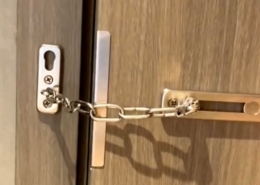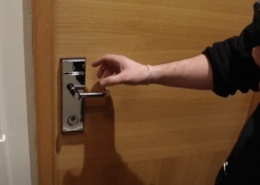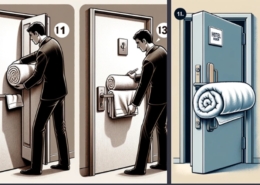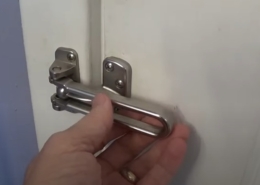Understanding RFID Hotel Key Cards and Why Hotels Use Them
Understand why more hotels are adopting RFID hotel key cards and how they enhance your stay. Dive into RFID technology and learn how it revolutionizes hotel security and convenience.
Introduction
In the hospitality industry, one technology stands out for transforming how hotels operate and improving guest experience – Radio Frequency Identification, or RFID. Over the years, RFID hotel key cards have gradually replaced traditional magnetic stripe cards in many establishments, promising better security and more convenience.
But how do they work, and why are they becoming more popular? This guide is designed to shed light on RFID hotel key cards, offering a better understanding of this innovative technology.
What is an RFID key card in a hotel?
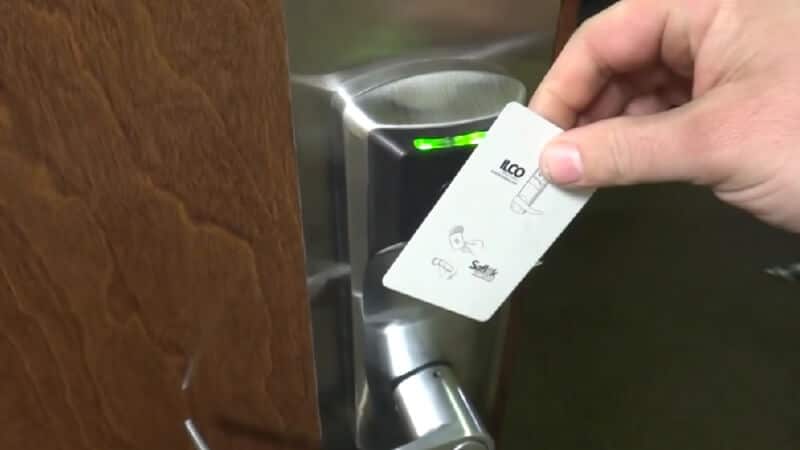
An RFID key card is a plastic card embedded with a Radio Frequency Identification (RFID) chip. The chip stores and processes data, enabling contactless communication between the card and the RFID hotel door lock. This technology is commonly used in various applications, such as access control, identification, and payment systems.
In hotels, RFID key cards are a secure and convenient method for guests to access their rooms and other facilities.
How Does an RFID Key Card Work?
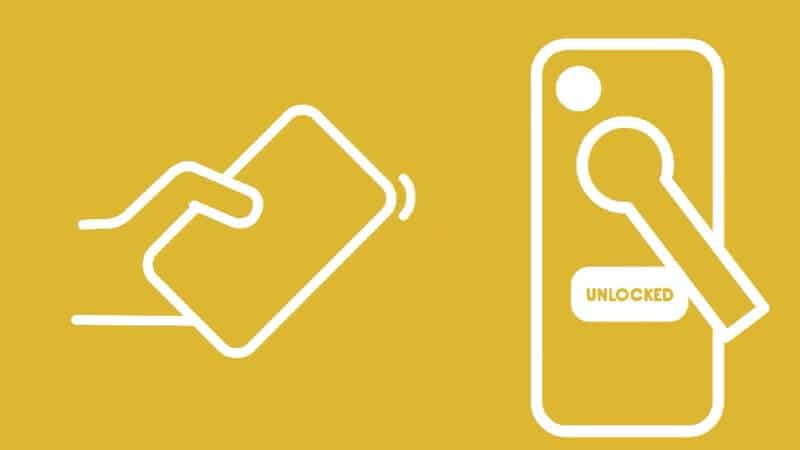
RFID (Radio Frequency Identification) key cards are a type of security technology used in many hotels to allow access to rooms or other secured areas. Here’s a basic rundown of how they work:
- Each card has a tiny embedded chip and antenna. This chip is programmed with a unique code.
- The reader sends a radio wave signal when you place the card near a compatible RFID reader (like the electronic door lock system in a hotel room).
- The chip in the card picks up this signal and uses its energy to power up and transmit its unique code back to the reader.
- If the reader recognizes the code as valid, it will unlock the door, allowing access to the room.
This process happens almost instantly, making RFID key cards a convenient and efficient access control method. These cards are widely used in hotels, offices, and other facilities where secure access control is required. They can be programmed and reprogrammed with different access codes, adding a security layer.
What kind of RFID cards do hotels use?
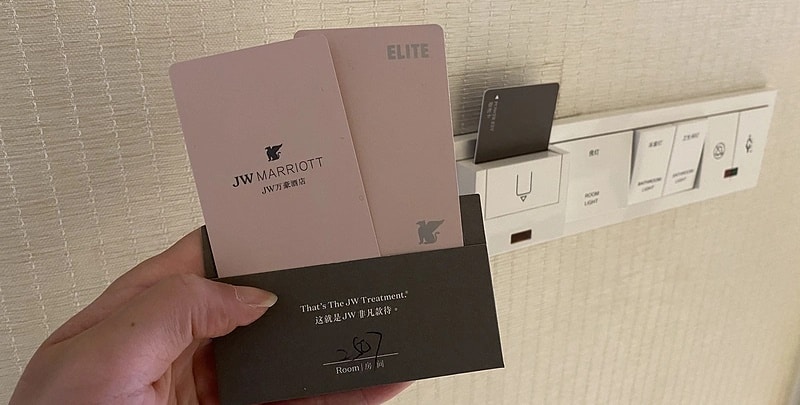
Hotels typically use passive RFID cards for their key card systems. Passive RFID cards do not have a power supply. Instead, they are powered by the radio waves emitted from the RFID reader when the card comes into its proximity.
MIFARE and Temic are two common types of RFID cards used in hotels, each with its specifications and uses.
- MIFARE Cards: MIFARE is a brand owned by NXP Semiconductors. Their cards operate at 13.56 MHz (high-frequency) and comply with the ISO/IEC 14443 Type A standard. MIFARE cards are very popular due to their reliability, security features, and versatility. They come in several variants, including MIFARE Classic, MIFARE DESFire, MIFARE Plus, and MIFARE Ultralight. MIFARE DESFire, for instance, is known for offering advanced security with AES-128 encryption.
- Temic Cards: Temic cards, also known as T5577 cards, are low-frequency (125 kHz) RFID cards. They are generally less expensive than MIFARE cards and have a shorter read range. While they do not offer the same level of security as MIFARE cards, they are often used in environments where high security is not the primary concern, such as certain types of hotel door locks.
Both cards are typically the size and shape of a standard credit card, although they can also come in other forms like wristbands or key fobs. They can be programmed to allow access to specific rooms or areas, and the access permissions can be easily changed if the card is lost or the guest checks out.
The choice between these and other types of RFID cards will depend on various factors, including the specific requirements of the hotel’s security system, the budget, and the desired balance between convenience and security.
What are the advantages of RFID key cards?
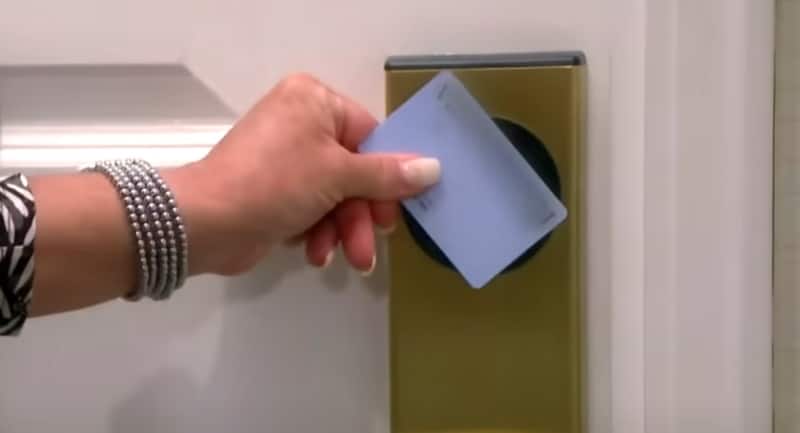
What benefits can the use of RFID cards bring to hotels? There are several reasons why many hotels have switched from traditional keys or magnetic stripe cards to RFID key cards:
- Greater Security: RFID key cards offer higher security levels than traditional magnetic stripe cards. The encrypted data stored on the RFID chip is more challenging to duplicate, reducing the risk of unauthorized access. Additionally, hotels can quickly deactivate lost or stolen cards, further enhancing security.
- More Convenient Use: Guests can easily access rooms by tapping or waving their RFID key card near the reader. This contactless method eliminates the need for inserting the card into a slot, making it more convenient and faster than traditional key cards.
- Longer Service Life: RFID key cards are more durable and have a longer lifespan than magnetic stripe cards. RFID cards are contactless, so they tend to wear out less quickly and are less likely to be demagnetized, reducing the need for frequent replacements.
- More Affordable: The cost of RFID key cards has significantly decreased, making them a more affordable option for businesses, including hotels. Additionally, their long service life reduces the long-term expenses associated with card replacements.
- Streamlined check-in and check-out processes: RFID key cards can store essential guest information, such as room number, access privileges, and check-in and check-out times. This information simplifies the check-in process and allows hotels to provide a tailored experience for each guest.
- Energy management: Hotels can promote energy conservation by incorporating RFID key cards into energy-saving switch systems in hotel rooms. Guests insert their key card into a designated slot, which activates power for the room’s lights and electrical outlets. This ensures that electricity is only consumed when guests are in the room.
- Access control for facilities: Hotels can use RFID key cards to manage access to various facilities, such as elevators, fitness centers, and meeting rooms. This helps maintain guest privacy and security while also allowing hotels to monitor and control the usage of these facilities.
- Personalization and Branding: Hotels can customize RFID key cards with their branding and guest information, creating a more personalized experience for guests and promoting the hotel’s identity.
- Easy to integrate and use: RFID key cards can be used with other RFID systems in the hotel, such as payment systems, elevators, or other secured areas.
Overall, RFID key cards are a convenient and secure way for hotels to manage access to their rooms and other facilities.
What Can an RFID Key Card Do?
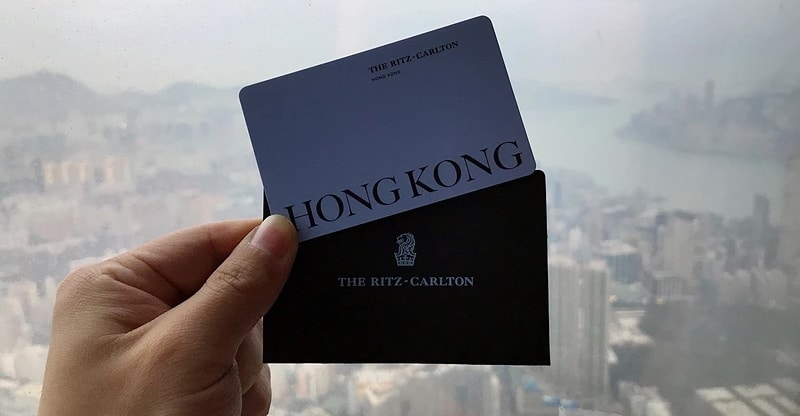
RFID key cards are commonly used in hotels for various purposes, enhancing the security and convenience of the guest’s stay. Here’s what an RFID key card can do in a hotel:
- Store Hotel Guest Information: RFID key cards can store essential guest information, such as room numbers, access privileges, and check-in and check-out times. This data simplifies the check-in process and allows the hotel to provide a personalized experience for its guests.
- Use Hotel Elevator: Hotels can restrict elevator access to authorized guests by requiring them to use their RFID key cards. This feature enhances security and prevents unauthorized individuals from accessing guest floors.
- Open Hotel Room Doors: The primary function of an RFID key card is to grant guests access to their rooms. When the card is placed near the lock, the lock reads the data on the chip. The door unlocks if the data matches the room number and the current date and time fall within the check-in and check-out times.
- Energy Saving: Some hotels use RFID key cards with energy-saving systems. When guests enter their room, they place their key card into a slot near the door, activating the room’s lights and climate control system. When the guest leaves and removes their card, the system turns off, saving energy.
- Control Check-In and Check-Out Time: Hotels can program RFID key cards with specific check-in and check-out times, automatically granting or restricting room access accordingly. This feature helps manage room availability and ensures a smoother guest experience.
- Access to Hotel Facilities: In addition to room access, RFID key cards can also be programmed to grant access to other areas of the hotel, such as the gym, pool, business center, or club lounge. This ensures that only guests with the appropriate privileges can enter these areas.
- Track Cleaning and Maintenance: Some hotels use RFID key cards to track the cleaning and maintenance of rooms. When a housekeeping or maintenance staff member enters the room, they swipe their card, which records the time of their entry and exit. This can help hotel management ensure rooms are being cleaned and maintained properly.
- Integration with Other Services: Some hotels integrate their RFID key cards with other services like on-site restaurants, bars, and spas. Guests can use their key cards to charge purchases to their rooms, providing a seamless guest experience.
How to Program an RFID Key Card?
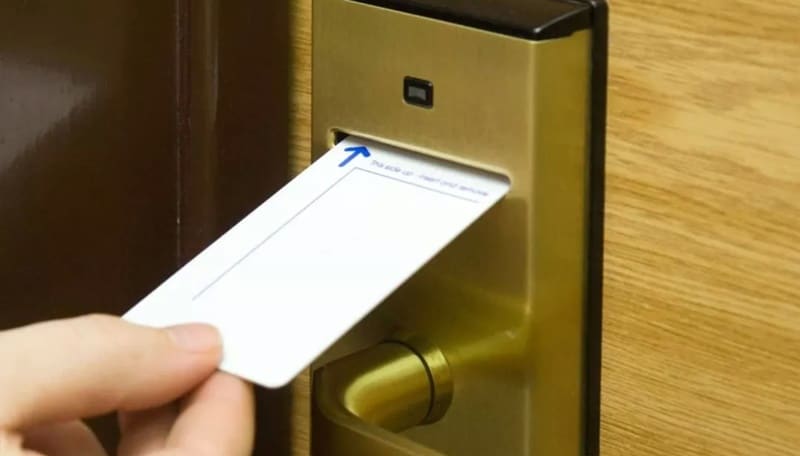
Programming an RFID key card is relatively straightforward, although the specifics can vary depending on the system used. Generally, it involves the following steps:
- Obtain an RFID encoder: Acquire an RFID encoder/reader compatible with your hotel’s specific RFID key card technology.
- Install the RFID key card lock system software: Install the necessary hotel door lock software on a computer connected to the RFID encoder/reader. This software will input guest information, access privileges, and check-in and check-out times.
- Input guest information: Enter the necessary guest data into the software, including room number, access privileges, and check-in and check-out times. This information will be stored on the RFID key card.
- Place the RFID key card on the encoder/reader: Position the RFID key card on the encoder/reader according to the device’s instructions.
- Write the data onto the key card: Follow the software prompts to transfer the guest data onto the RFID key card. The encoder/reader will use radio frequency technology to write the information onto the card’s embedded microchip.
- Test the programmed key card: Verify its functionality on a compatible door lock or RFID reader. This step ensures that the card has been correctly programmed and will provide the intended access to the guest.
Following these steps, hotel staff can efficiently program RFID key cards to manage guest access and enhance the overall guest experience.
Remember, only authorized personnel should have access to the key card programming system. It’s also important to handle key cards securely and responsibly to maintain the security and privacy of your guests. Always follow your hotel’s policies and procedures regarding programming and handling key cards.
Also, remember that RFID key cards, as with all technology, can be subject to wear and tear, damage, or malfunction. Maintaining the cards and the programming system is important to ensure they function properly.
For more information about programming hotel RFID key cards, please visit: How to Program Hotel Key Cards? Step-by-Step Guide.
Price of RFID hotel key cards
The price of RFID hotel key cards can vary widely depending on several factors. These factors include the type of RFID technology used (low-frequency, high-frequency, or ultra-high-frequency), the level of encryption and security, the number of cards ordered, whether the cards are customized with the hotel’s branding and the specific vendor.
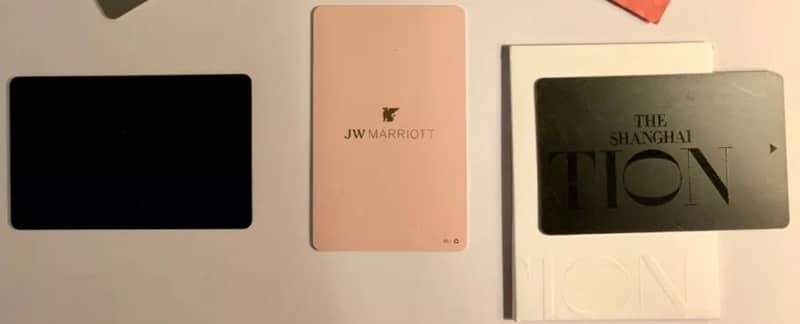
Generally, you might expect to pay anywhere from around $0.50 to a few dollars per card for bulk orders. Customizations, higher security features, or smaller order quantities could increase prices.
Here are some general price ranges:
- MIFARE RFID Hotel Key Cards: These high-frequency cards offer good security. They’re a bit more expensive than other cards due to their advanced features. For bulk orders, the price could range from about $1 to $3 per card, but it can vary.
- Temic RFID Hotel Key Cards: These are low-frequency cards that are generally less expensive than MIFARE cards but offer less security. The price might range from around $0.50 to $1.50 per card for bulk orders, but again, it can vary.
- Custom RFID Hotel Key Cards: If you want the cards to be customized with your hotel’s logo, colors, or other design elements, this will typically increase the cost. The exact amount will depend on the complexity of the design and the vendor’s pricing structure, but you might expect to pay an additional $0.10 to $0.50 per card or a setup fee for the design.
Please note that prices can change, and contacting several vendors for quotes is always a good idea to ensure you get the best deal. Vendors should be able to provide detailed advice on the most suitable type of card for your specific requirements.
Why Do You Need Custom RFID hotel key cards?
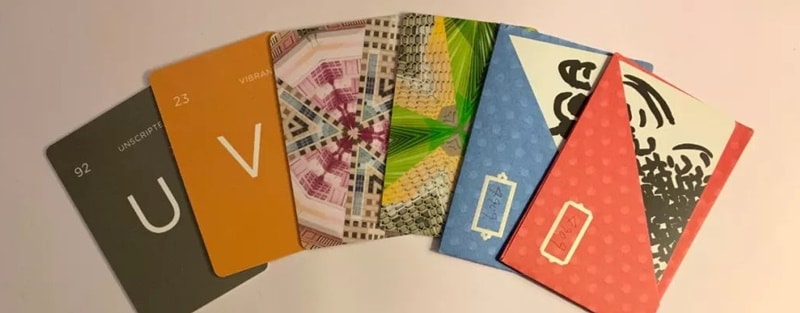
Custom RFID hotel key cards are RFID cards that are personalized with a hotel’s specific branding. This could include the hotel’s logo, colors, images, contact information, or any other design elements that reflect the hotel’s brand. The level of customization can vary, from simple logos to full-color, edge-to-edge graphics.
Custom RFID key cards serve multiple purposes. Not only do they function as room keys, but they also act as a branding tool for the hotel. Guests carry the key card throughout their stay, reminding them of the hotel’s brand. Furthermore, guests may keep the card as a souvenir if the design is attractive or unique, further extending its promotional value.
It’s important to work with a reliable vendor that can deliver high-quality cards, and that has a good understanding of the technical requirements of your hotel’s key card system. Request a sample before placing a large order to ensure the design and quality meet your expectations.
Want to custom RFID hotel key cards? Please visit our Custom Hotel Key Cards Service Center.
RFID key card hack, what is it?
RFID key card hacking refers to the unauthorized scanning, cloning, or manipulation of RFID key cards to gain access to secure areas such as hotel rooms, offices, or even some cars. Hackers use devices that can read and copy the data on an RFID card and then transfer that data to a blank card, essentially creating a duplicate of the original card.
While such attacks are technically possible, they require specialized knowledge and equipment. They are relatively rare compared to other types of security breaches.
For more information about RFID key card hacks and how to avoid them, please check this article: Hotel Key Card Hack: How Does It Work and How to Avoid?
Conclusion
RFID hotel key cards enhance guest experiences while maintaining high-security standards. Their benefits, including contactless operation, durability, and the ability to integrate with other hotel services, make them a preferred choice for many modern hotels.


